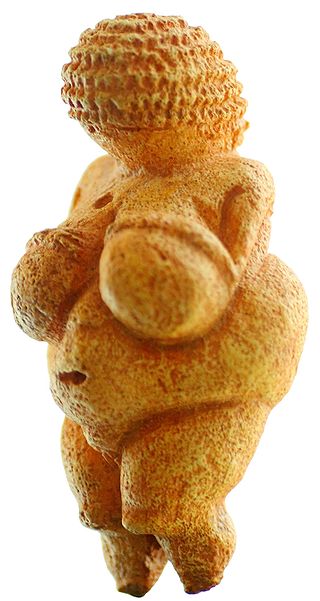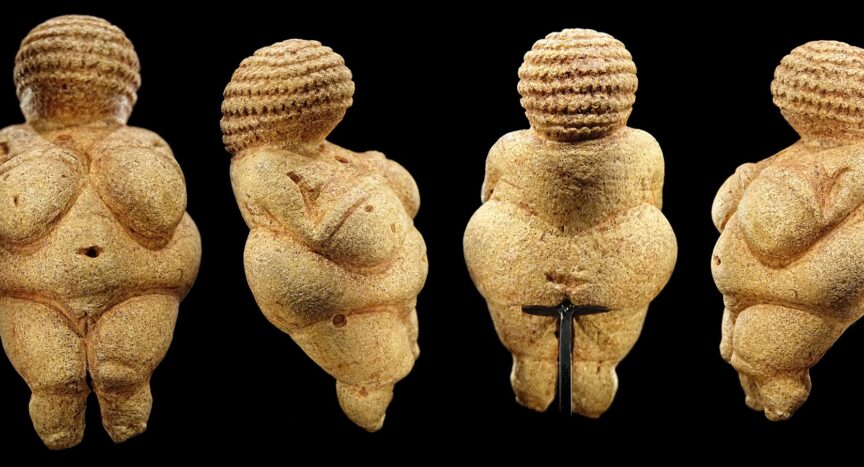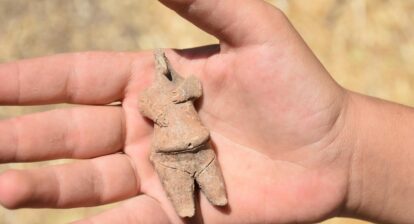The Venus of Willendorf is a female figurine with a voluptuous body. The exaggerated anatomy and massive breasts are a powerful depiction of being female — symbolizing the fertility goddess’ characteristics of sex and reproduction.
In September 2020, I did a video/ blogpost on Mother Goddesses – the various voluptuous female figurines that have been found since ancient times around the world. While no one can definitely say what these figures actually represented to people at that time, and their symbolism comes entirely from anthropologists’ interpretations, what we do know is that such figurines continued to be created throughout history.
Some experts believe that women were at the top of societies — from perhaps as far back as the late Stone Age — the period to which two figures: the Hohle Fels Venus belongs (40,000 to 35,000 years old) and the Venus of Willendorf, a 30,000-year-old statuette discovered on August 7, 1908 in Austria. Alternatively, perhaps humans considered fertility an important aspect of a successful community. Whatever the reason, the figures were created by many people.
The Venus of Willendorf is four inches tall and is the only one of the figures to be carved from oolite limestone. This fantastic figurine was discovered over a hundred years ago near the shores of the Danube river in Willendorf, Austria. However, the oolite limestone out of which it is carved is not from that area, so scientists were never clear as to from where she actually came.

Venus of Willendorf
A new study sheds new light on this mystery, where the researchers used advanced tomography to study the details of the figurine at resolutions of just 11 microns. According to the study, the people who crafted this figurine – the Gravettian people – travelled hundreds of miles across Europe carrying this statue with them. The study authors compared the limestone in the Venus to oolite deposits across Europe, from France in the west to Ukraine in the east, and from Germany in the north to Sicily in the south. They eventually matched the figurine’s limestone with a location near Lake Garda, Sega di Ali, in northern Italy, highlighting that this could be the likely origin of “one of the most famous signs of early modern human symbolic behavior”. They also identified a mollusk shell from the Jurassic period inside the figurine that matched the age of the deposit at Sega di Ala and eliminated other sites that were much younger.
“The exact time when the Venus was created or its material collected and transported is unknown. However, independent of the location of origin, we can state with certainty that its individual owners kept and protected it en route”, say the authors in the study. “A rapid transport from northern Italy to Lower Austria within months would probably have been technically possible, but would rather require a purposeful motivation behind the journey, which seems questionable,” they further added. “The travel of the Venus or its material from northern Italy to the Danube is more likely the outcome of a series of undirected incidents which may have required years or even generations” and that “could have started as early as 31,000 years ago.”
While there were also weaker links to oolite in Ukraine, the authors noted that “Even if we cannot claim with absolute certainty that the raw material of the Venus originates from a particular locality, the match between the Venus and Sega di Ala samples is almost perfect and suggests a very high probability for the raw material to come from south of the Alps”. “While this is the most likely result from our analysis, it cannot be ruled out, although based on a lower statistical likelihood, that the material or the crafted figurine could originate from the area of the eastern Ukraine, which would indicate a long-term and long-distance diffusion of cultural artifacts over generations from the East to the West,”. “In any event, our results suggest considerable mobility of Gravettian people in the time around 30,000 years ago.”
The bottom line is that the people who created this statue thought it was important to them and carried it across Europe as they moved from one place to another.
The study was published in Scientific Reports on February 28, 2022







